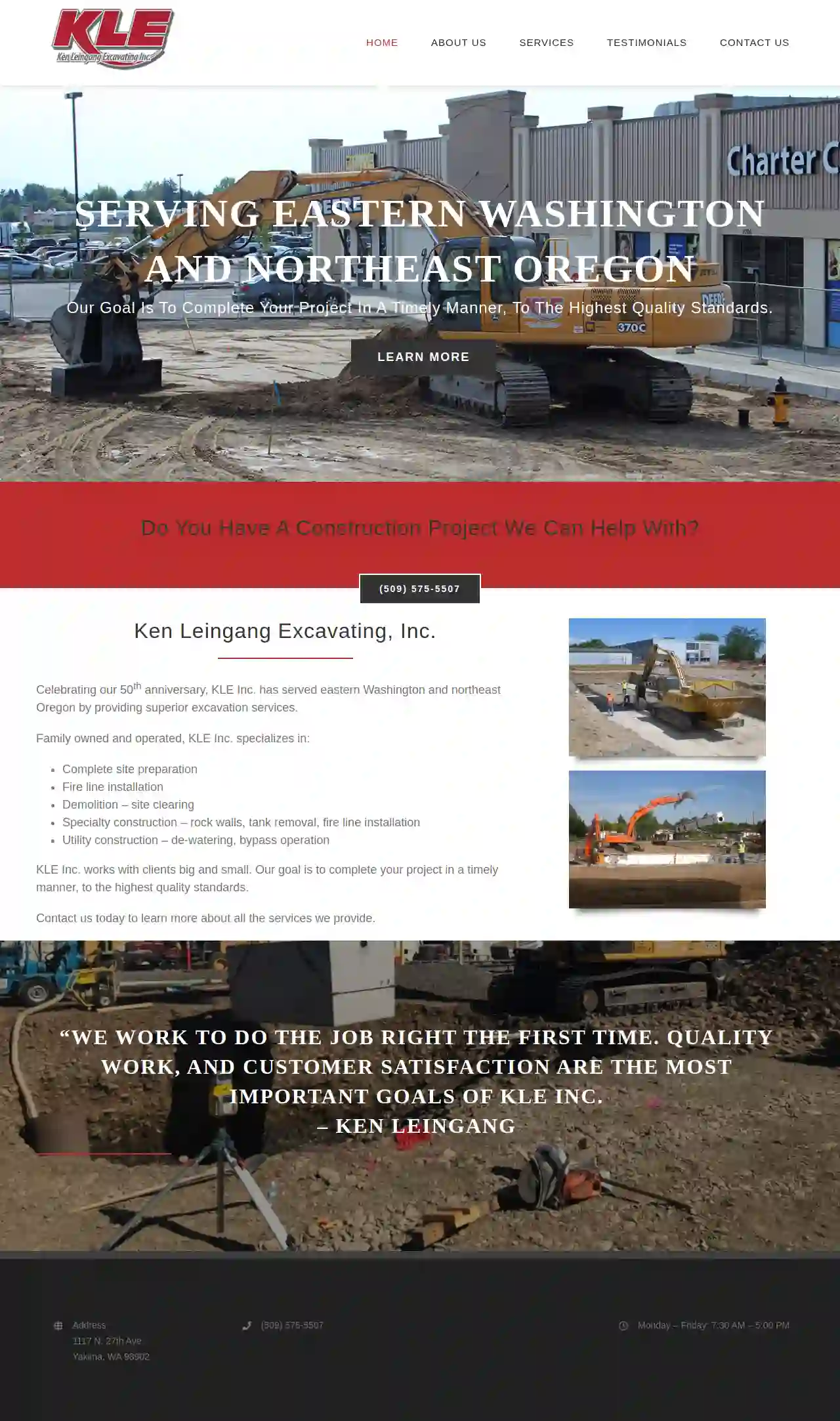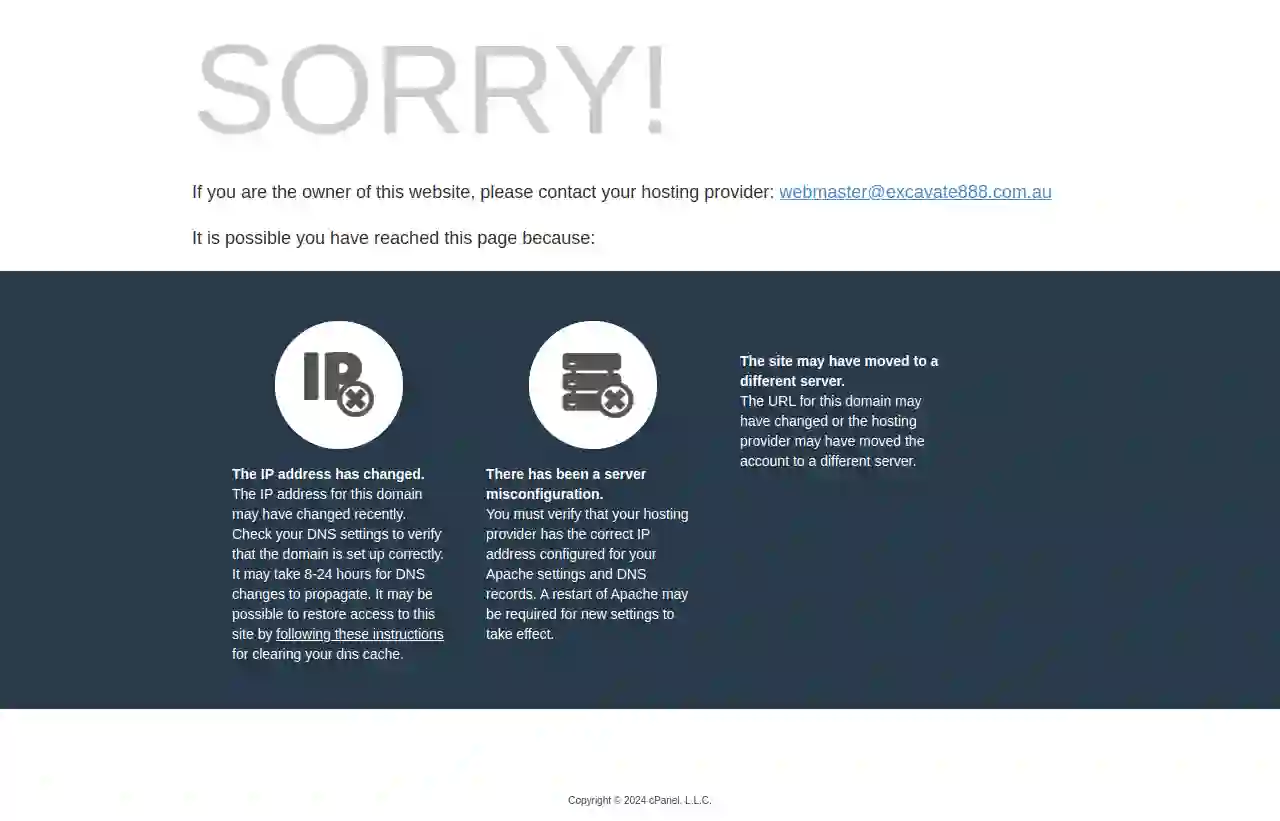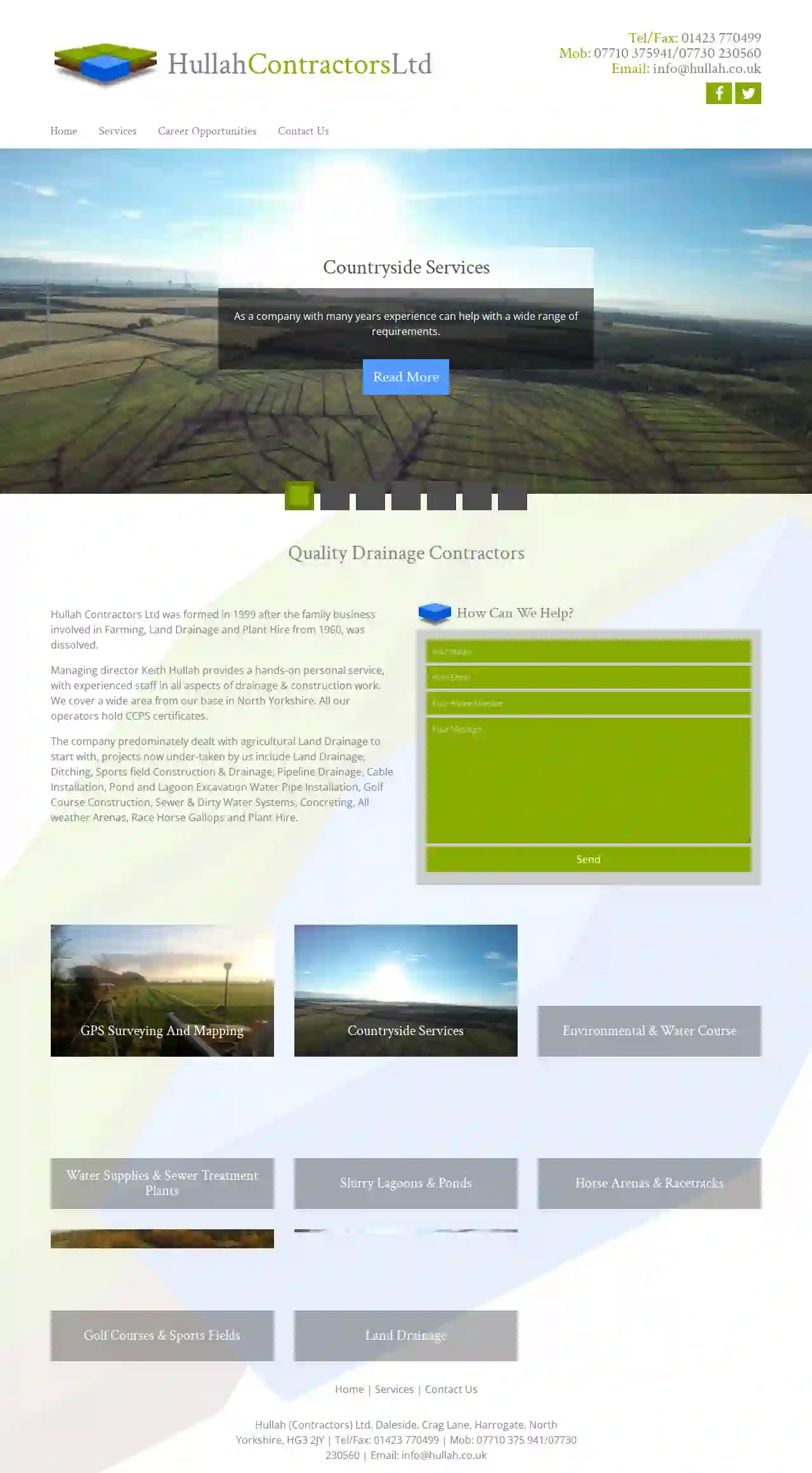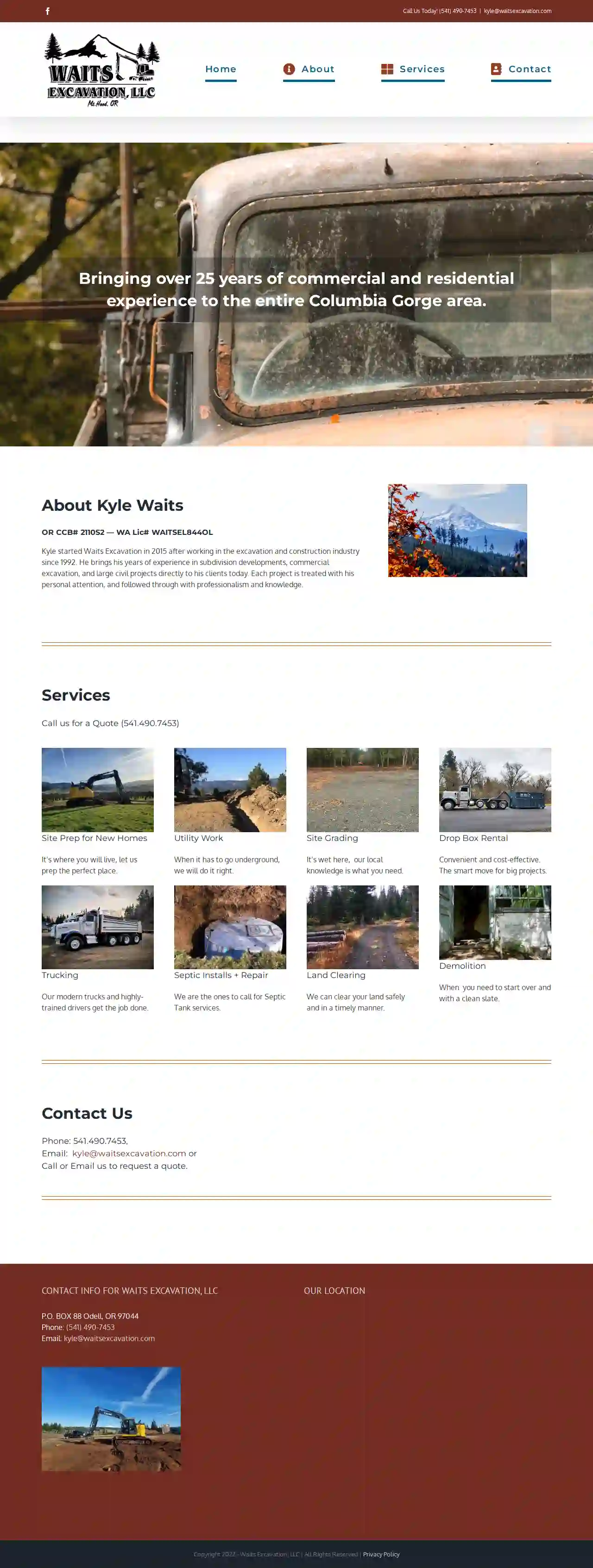Demolition Contractors Cowpen
Find Demolition Contractors Near Me in Cowpen
Receive 3 FREE Demo Contractors quotes for your project today! Compare profiles, reviews, accreditations, portfolio, etc... and choose the best deal.

Northstar Civil Engineering Ltd.
52 reviewsLauren House, Suite 137A Wakefield Road, Fenay Bridge, Huddersfield, HD5 0AN, GBWe are Northstar Civil Engineering Ltd YOUR PARTNER IN CONSTRUCTION We are a civil engineering and construction company working within Yorkshire and the surrounding areas. With the experience and expertise that Northstar Civil Engineering has to offer, we undertake most forms of Civil Engineering. We are fully accredited, trained professionals in all manner of civil engineering and groundworks projects using modern machinery and best practises, we can complete the job efficiently with the highest degree of excellence. Our genuine passion for construction along with our experience and diligence plays a huge role in our ability to complete projects on time and within budget whilst not compromising on the quality of our services. LOOKING FOR A CIVILS CONTRACTOR FOR YOUR NEXT PROJECT? Speak to our one of team today for a quotation
- Services
- Why Us?
- Gallery
Get Quote
Diamond Drainage & Groundworks
4.650 reviewsUnit 1 Stephenson Court, Skippers Lane, Middlesbrough, TS6 6UT, GBDiamond Drainage & Groundworks: Your Local Experts for All Your Drainage and Groundwork Needs Diamond Drainage & Groundworks is a trusted local company serving the North East of England. We specialize in providing high-quality drainage and groundwork services for both residential and commercial clients. Our team of experienced professionals is dedicated to delivering exceptional service at competitive prices. Why Choose Diamond Drainage & Groundworks? 24/7 Emergency Callouts: We understand that drainage issues can arise at any time, so we offer a free emergency callout service, available 24 hours a day, 7 days a week. Fast and Efficient Service: We strive to provide prompt service, with most callouts completed within the hour. Competitive Pricing: We offer transparent pricing and are committed to beating any like-for-like quotation. Guaranteed Workmanship: All our work is fully guaranteed, giving you peace of mind. Friendly and Reliable Team: Our team is known for their reliability, friendliness, and tidiness. Local Expertise: As a local company, we understand the unique challenges of the North East and are committed to providing tailored solutions. Our Services We offer a comprehensive range of drainage and groundwork services, including: Drainage Services: Toilet unblocking, sink unblocking, external drain unblocking, drainage installation, high pressure drain jetting, CCTV drain inspection, soakaways, manhole inspection & repair, drain repair, land drain, septic tanks. Groundwork Services: Residential & commercial, ground stabilisation, reinforced concrete works, retaining walls & service yards, Section 278 highway works, block paving and slabbing, parking areas, resin driveways & walkways, demolition, specialist plant hire, all insurance work undertaken.
- Services
- Why Us?
- Gallery
Get Quote
Thornton Tree and Groundworks
511 reviewsHarrogate, GBThornton Tree & Groundworks We specialize in a wide range of hard landscaping and groundwork services suitable for both residential and commercial projects. Located just north of Harrogate, we operate within the local surrounding area. Our team is dedicated to providing high-quality workmanship and exceptional customer service. We take pride in our attention to detail and commitment to delivering projects on time and within budget. Whether you're looking to create a stunning new patio, install a beautiful fence, or simply need some general groundwork done, we have the expertise and experience to get the job done right. Contact us today for a free consultation and let us help you bring your landscaping dreams to life.
- Services
- Why Us?
- Testimonials
- Gallery
Get Quote
Ken Leingang Excavating Inc
47 reviews1117 N. 27th Ave., Yakima, 98902, GBCelebrating 50 Years of Superior Excavation Services Family owned and operated, KLE Inc. has been serving Eastern Washington and Northeast Oregon for over 50 years, providing exceptional excavation services. We take pride in our commitment to quality, efficiency, and customer satisfaction. Our team of experienced professionals is dedicated to completing your project on time and to the highest standards. We understand that every project is unique, and we work closely with our clients to ensure their vision is realized. Whether you're a homeowner, a business owner, or a government agency, we have the expertise and resources to handle your project from start to finish. At KLE Inc., we believe in building strong relationships with our clients. We are committed to open communication, transparency, and providing exceptional customer service. We are confident that you will be pleased with the results of your project. Contact us today to learn more about our services and how we can help you achieve your construction goals.
- Services
- Why Us?
- Gallery
Get Quote
Excavate888 Mini Excavations Newcastle
4.822 reviews123 Main Street, Melbourne, 3000, GBExcavate 888: Your Trusted Excavation Partner Excavate 888 is a leading excavation company in [City, State], Australia, dedicated to providing high-quality excavation services for residential, commercial, and industrial projects. We are a team of experienced and skilled professionals committed to delivering exceptional results on time and within budget. Our commitment to safety, quality, and customer satisfaction has earned us a reputation for excellence in the industry. We utilize state-of-the-art equipment and techniques to ensure efficient and precise excavation work, minimizing disruption and maximizing efficiency. Whether you need site preparation, trenching, foundation excavation, or any other excavation service, Excavate 888 is your reliable partner. We work closely with our clients to understand their specific needs and provide tailored solutions that meet their expectations. Contact us today for a free consultation and let us help you bring your project to life.
- Services
- Why Us?
- Testimonials
Get Quote
Beachside Landscaping & Excavation
4.930 reviewsWashington, GBAbout Us At Beachside Landscaping & Excavation/Pavers & Hardscapes, we're committed to providing top-quality landscaping services in Northwest Florida. Our team specializes in all types of landscaping enhancements, including but not limited to pavers, artificial turf, drainage, landscape lighting, irrigation, sod, retaining walls, walkways, pool decks, fences, pergolas, clean-ups and more! We are always striving to exceed each client's expectations. As a locally owned and operated company, we're licensed, insured, and workers' compensation covered. We pride ourselves on clear communication and efficient project management. No matter the project, our experienced team is ready to transform your outdoor spaces. Experience the Beachside difference! Contact us at (850) 202-6383 to elevate your property's curb appeal and create stunning outdoor living areas. Our mission at Beachside Landscaping & Excavation/Pavers & Hardscapes is simple: To provide high-quality services in a timely manner. Our team caters to each project’s specific needs to ensure excellence. If you're in Panama City Beach, Panama City, Mexico Beach, St Joe Beach, Port St Joe, Cape San Blas, 30A, Rosemary Beach, Laguna Beach or any of these surrounding areas, we're here for you!
- Services
- Why Us?
- Gallery
Get Quote
Hullah Contractors Ltd
52 reviewsDaleside, Crag Lane, Harrogate, North Yorkshire, HG3 2JY, GBQuality Drainage Contractors Hullah Contractors Ltd was formed in 1999 after the family business involved in Farming, Land Drainage and Plant Hire from 1960, was dissolved. Managing director Keith Hullah provides a hands-on personal service, with experienced staff in all aspects of drainage & construction work. We cover a wide area from our base in North Yorkshire. All our operators hold CCPS certificates. The company predominately dealt with agricultural Land Drainage to start with, projects now under-taken by us include Land Drainage, Ditching, Sports field Construction & Drainage, Pipeline Drainage, Cable Installation, Pond and Lagoon Excavation Water Pipe Installation, Golf Course Construction, Sewer & Dirty Water Systems, Concreting, All weather Arenas, Race Horse Gallops and Plant Hire.
- Services
- Why Us?
- Gallery
Get Quote
A Douglas Construction Ltd
52 reviewsUnit 9, Winnings Court Yard, Walbottle Road, Newburn, Newcastle Upon Tyne, NE15 9RU, GBWelcome to A. Douglas Construction NE Ltd A. Douglas Construction NE Ltd is an experienced Newcastle Upon Tyne based construction company who specialise in all types of commercial and industrial building works and residential new build works. We are a main contractor who take on projects valued between £50,000 and £2,000,000. Experience you can trust We operate primarily in the North East, project managed from start to finish. New Builds for Property developers We will undertake all extensions and complete them from start to finish to your satisfaction. Offices, Warehouse & Industrial Units We provide construction services for commercial clients on new build, refurbishment and fit outs. Restaurants & Bars From the initial concept, right through to the finished project.
- Services
- Why Us?
- Gallery
Get Quote
Reecer Creek Excavating
4.49 reviews1710 West University Way, Ellensburg, 98926, GBReecer Creek Excavating: Your Trusted Road Building Partner in Ellensburg, WA Reecer Creek Excavating is a well-established road building contractor based in Ellensburg, Washington. With a commitment to quality and customer satisfaction, we provide a comprehensive range of services to meet your excavation and construction needs. Our team of experienced professionals is dedicated to delivering projects on time and within budget, ensuring your complete satisfaction. We understand the importance of a strong foundation for any project. That's why we utilize state-of-the-art equipment and techniques to ensure the highest level of precision and efficiency. Whether you're planning a new road, a residential development, or a commercial project, Reecer Creek Excavating is your reliable partner for all your excavation and road building requirements.
- Services
- Why Us?
- Our Team
Get Quote
Waits Excavation, LLC
51 reviewsP.O. BOX 88, Odell, 97044, GBAbout Kyle Waits Kyle started Waits Excavation in 2015 after working in the excavation and construction industry since 1992. He brings his years of experience in subdivision developments, commercial excavation, and large civil projects directly to his clients today. Each project is treated with his personal attention, and followed through with professionalism and knowledge.
- Services
- Why Us?
- Gallery
Get Quote
Over 13,059+ Excavation Contractors onboarded
Our excavation providers operate in Cowpen and surrounding areas!
ExcavationHQ has curated and vetted the Best Excavation Contractors near Cowpen. Find the most reliable contractor today.
Frequently Asked Questions About Demolition Contractors
- Permits and Regulations: Obtain all necessary demolition permits and comply with local building codes and environmental regulations.
- Contracts: Have a clear and comprehensive contract with the demolition contractor outlining the scope of work, payment terms, and liabilities.
- Environmental Laws: Comply with environmental laws regarding hazardous material removal, waste disposal, and pollution control.
- Neighboring Property Rights: Respect neighboring property rights and take measures to prevent damage or disruption to adjacent properties.
- Worker Safety: Adhere to worker safety regulations and provide a safe working environment for demolition crews.
- Feasibility Studies: Assessing the viability and challenges of a demolition project.
- Demolition Planning: Developing demolition plans, including method selection, sequencing, and safety procedures.
- Permitting Assistance: Navigating the demolition permitting process and ensuring compliance with regulations.
- Hazardous Material Surveys: Identifying and managing hazardous materials, such as asbestos and lead paint.
- Cost Estimating: Providing accurate cost estimates for demolition services.
- Project Management: Overseeing the demolition process and ensuring it proceeds as planned.
- Site Security: Secure the demolition site with fencing and warning signs to prevent unauthorized access.
- Personal Protective Equipment (PPE): Workers should wear appropriate PPE, including hard hats, safety glasses, gloves, and steel-toe boots.
- Hazardous Material Removal: Properly identify and remove asbestos, lead paint, or other hazardous materials before demolition begins.
- Utility Disconnections: Disconnect all utilities, such as electricity, gas, and water, before demolition.
- Controlled Demolition Techniques: Employ controlled demolition methods to minimize risks and ensure the structure comes down safely.
- Dust Control: Implement dust suppression measures, such as water spraying or misting, to reduce airborne particles and protect air quality.
- Emergency Planning: Have an emergency plan in place, including communication protocols and evacuation procedures, in case of unforeseen events.
What are the legal considerations for demolition projects?
What is the role of a demolition consultant?
What is asbestos abatement?
What are the safety precautions for demolition?
What are the legal considerations for demolition projects?
- Permits and Regulations: Obtain all necessary demolition permits and comply with local building codes and environmental regulations.
- Contracts: Have a clear and comprehensive contract with the demolition contractor outlining the scope of work, payment terms, and liabilities.
- Environmental Laws: Comply with environmental laws regarding hazardous material removal, waste disposal, and pollution control.
- Neighboring Property Rights: Respect neighboring property rights and take measures to prevent damage or disruption to adjacent properties.
- Worker Safety: Adhere to worker safety regulations and provide a safe working environment for demolition crews.
What is the role of a demolition consultant?
- Feasibility Studies: Assessing the viability and challenges of a demolition project.
- Demolition Planning: Developing demolition plans, including method selection, sequencing, and safety procedures.
- Permitting Assistance: Navigating the demolition permitting process and ensuring compliance with regulations.
- Hazardous Material Surveys: Identifying and managing hazardous materials, such as asbestos and lead paint.
- Cost Estimating: Providing accurate cost estimates for demolition services.
- Project Management: Overseeing the demolition process and ensuring it proceeds as planned.
What is asbestos abatement?
What are the safety precautions for demolition?
- Site Security: Secure the demolition site with fencing and warning signs to prevent unauthorized access.
- Personal Protective Equipment (PPE): Workers should wear appropriate PPE, including hard hats, safety glasses, gloves, and steel-toe boots.
- Hazardous Material Removal: Properly identify and remove asbestos, lead paint, or other hazardous materials before demolition begins.
- Utility Disconnections: Disconnect all utilities, such as electricity, gas, and water, before demolition.
- Controlled Demolition Techniques: Employ controlled demolition methods to minimize risks and ensure the structure comes down safely.
- Dust Control: Implement dust suppression measures, such as water spraying or misting, to reduce airborne particles and protect air quality.
- Emergency Planning: Have an emergency plan in place, including communication protocols and evacuation procedures, in case of unforeseen events.